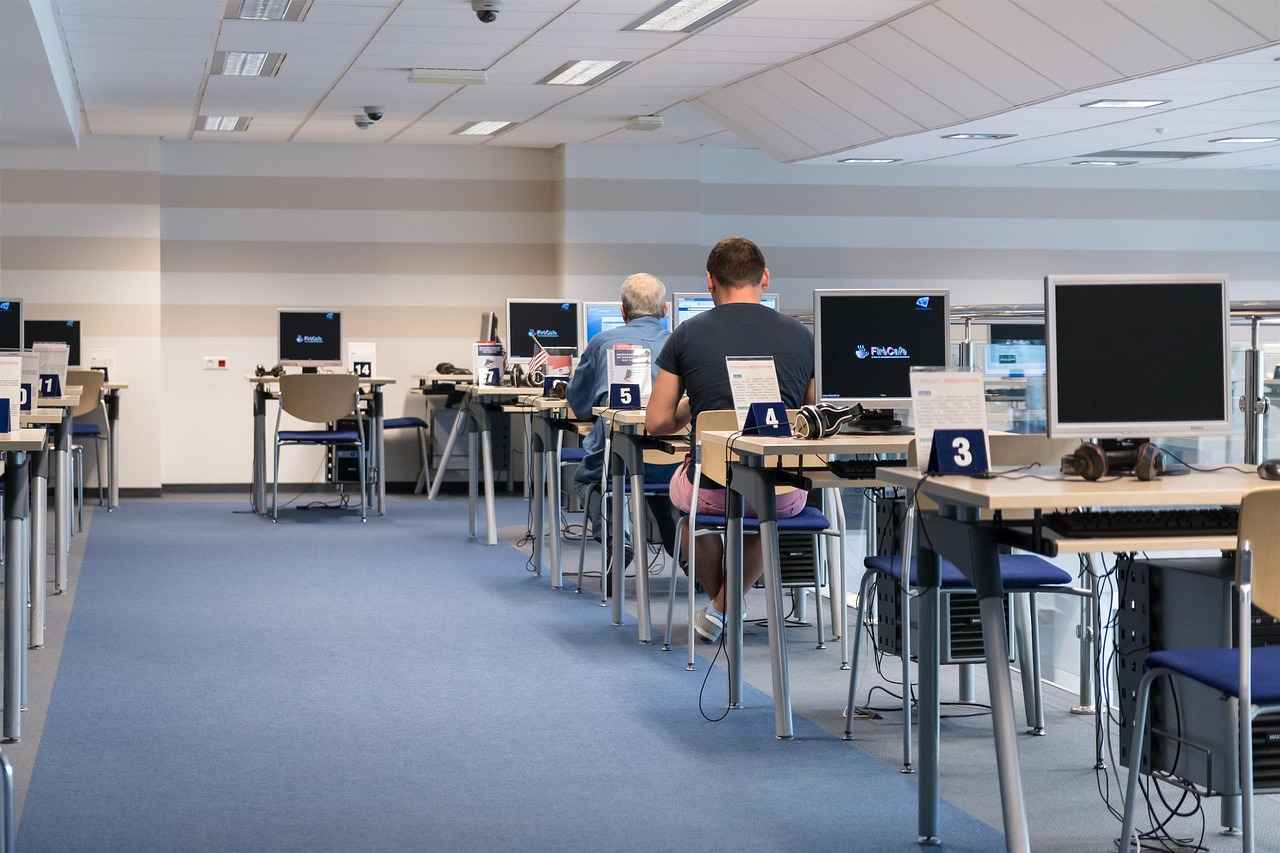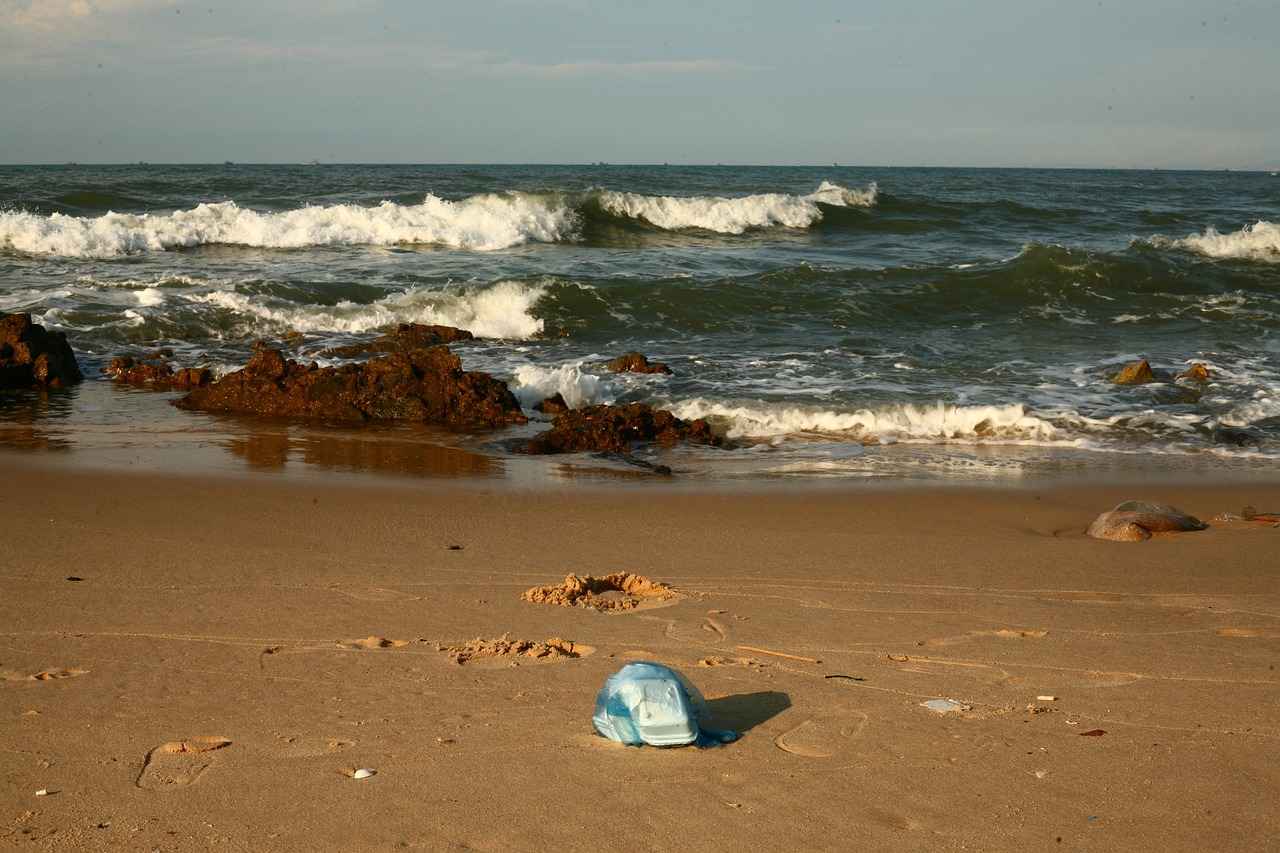is a captivating exploration of a fictional character designed to promote eco-friendly values and inspire action toward sustainability. Rocky, a vibrant and engaging figure, captures the hearts of both children and adults as he embarks on thrilling adventures that highlight the importance of recycling and environmental stewardship. Through his journeys, Rocky encourages communities to embrace sustainable practices, making a significant impact on how we view and interact with our environment.
Who is Rocky the Recycling Hero?
Rocky is not just a character; he is a symbol of hope and a champion for the planet. His charismatic personality and adventurous spirit make learning about recycling enjoyable and accessible. Through various missions, Rocky educates audiences about the critical role of recycling in conserving natural resources and reducing waste. His character embodies the belief that everyone can contribute to a healthier planet, inspiring individuals to take action in their own communities.
The Importance of Recycling
Recycling is essential for several reasons. It significantly reduces the amount of waste sent to landfills, conserves energy, and minimizes pollution. By understanding the importance of recycling, individuals can make informed choices that lead to a more sustainable future. The act of recycling not only benefits the environment but also fosters a sense of responsibility among community members to protect their surroundings.
Environmental Benefits of Recycling
- Greenhouse Gas Reduction: Recycling helps lower greenhouse gas emissions, which are a major contributor to climate change.
- Energy Conservation: The recycling process uses less energy compared to producing new materials, significantly reducing fossil fuel consumption.
- Landfill Waste Reduction: By recycling, we can decrease the volume of waste sent to landfills, preventing soil and groundwater contamination.
Rocky’s Missions: Educational Adventures
Rocky embarks on a variety of missions that serve as educational adventures. These engaging narratives not only entertain but also impart valuable lessons about recycling and environmental care. Through storytelling, Rocky illustrates the recycling process and its benefits, making complex concepts easy to understand for audiences of all ages.
Interactive Activities and Workshops
Rocky’s missions often incorporate interactive activities and workshops designed to engage participants. These hands-on experiences empower individuals to take practical steps towards sustainability, reinforcing the idea that everyone can make a difference. By participating in these events, community members can learn about recycling techniques and develop skills that promote eco-friendly practices in their daily lives.
How to Get Involved with Rocky’s Missions
Communities can actively participate in Rocky’s initiatives by organizing local recycling drives and educational events. Such involvement not only promotes awareness but also fosters a sense of unity in the fight against environmental degradation. Here are some practical ways to get involved:
- Create Community Recycling Programs: Establishing local recycling initiatives can significantly improve recycling rates and make it more accessible for residents.
- Volunteer for Environmental Causes: Engaging with organizations that align with Rocky’s mission allows individuals to contribute to conservation efforts directly, strengthening community ties.
The Future of Eco-Friendly Practices
As awareness of environmental issues continues to grow, the importance of eco-friendly practices like recycling becomes increasingly clear. Rocky’s ongoing mission to inspire change is vital in shaping a sustainable world for future generations. By embracing recycling and other sustainable practices, we can collectively work towards a healthier planet, ensuring that Rocky’s legacy as a recycling hero lives on.

Who is Rocky the Recycling Hero?
Rocky the Recycling Hero is not just a fictional character; he is a vibrant symbol of environmental consciousness designed to engage and educate people of all ages about the critical importance of recycling. With a charming personality and a passion for sustainability, Rocky embarks on a variety of adventures that highlight how individual actions can lead to significant positive changes in our environment.
Rocky’s character serves as a beacon of hope, inspiring children and adults alike to take part in eco-friendly practices. Through his exciting missions, he conveys a powerful message: every small action counts. Whether it’s sorting recyclables at home or participating in community clean-up events, Rocky teaches that these efforts contribute to a healthier planet.
Rocky’s adventures are filled with engaging stories that illustrate the recycling process and its numerous benefits. By using relatable scenarios, he simplifies complex environmental concepts, making them accessible to everyone. Children find themselves captivated by his tales, while adults appreciate the deeper insights into sustainable living.
- Storytelling: Rocky uses storytelling as a tool to explain the intricacies of recycling, showing how materials like plastic, paper, and glass can be transformed into new products.
- Interactive Learning: His missions often include games and hands-on activities that encourage participation, making learning about recycling fun and memorable.
Understanding the importance of recycling is crucial for fostering a sense of responsibility towards the environment. Recycling not only conserves natural resources but also plays a vital role in reducing pollution and minimizing waste. By educating communities about these benefits, Rocky empowers individuals to make informed decisions that positively impact their surroundings.
Recycling significantly reduces the amount of waste sent to landfills, which in turn decreases greenhouse gas emissions and conserves energy. For instance, recycling aluminum saves up to 95% of the energy required to produce new aluminum from raw materials. Rocky emphasizes these statistics during his missions, illustrating the profound impact recycling can have on our planet.
Rocky’s character fosters community engagement by encouraging people to come together for a common cause. His missions often include organizing local recycling drives and educational events that create a sense of unity among participants. This collaborative spirit not only enhances recycling rates but also builds stronger community ties.
Communities looking to engage with Rocky’s initiatives can take several proactive steps:
- Organize Local Recycling Drives: By setting up community recycling events, individuals can encourage their neighbors to participate and learn more about recycling.
- Host Educational Workshops: Workshops led by local experts, inspired by Rocky’s teachings, can provide valuable insights into sustainable practices.
As environmental challenges continue to grow, Rocky remains committed to his mission of inspiring change. His character embodies the belief that through education, engagement, and collective action, we can create a sustainable future for generations to come. By following Rocky’s example, individuals and communities can contribute to a cleaner, greener planet.
In conclusion, Rocky the Recycling Hero is more than just a character; he represents the potential for positive change in our world. By embracing his teachings and participating in eco-friendly practices, we can all play a part in protecting our environment.

The Importance of Recycling
Recycling is an essential practice that plays a pivotal role in shaping a sustainable future. It not only helps in reducing waste but also contributes significantly to conserving natural resources and minimizing pollution. Understanding the importance of recycling empowers individuals and communities to make informed decisions that lead to a healthier planet.
At its core, recycling transforms waste materials into reusable resources. This process significantly reduces the amount of waste that ends up in landfills, where it can take decades or even centuries to decompose. By recycling, we can:
- Conserve Energy: Recycling materials like aluminum and glass requires less energy than producing new items from raw materials.
- Preserve Natural Resources: Recycling reduces the need for extracting, refining, and processing raw materials, which can be damaging to the environment.
- Reduce Pollution: The recycling process generates less air and water pollution compared to the production of new goods.
Recycling has profound environmental benefits that extend beyond just waste reduction. Here are some of the key advantages:
1. **Lower Greenhouse Gas Emissions:** Recycling reduces the energy needed for manufacturing processes, which in turn lowers greenhouse gas emissions. 2. **Conservation of Resources:** By recycling, we save valuable resources such as timber, water, and minerals.3. **Reduction of Landfill Waste:** Recycling diverts significant amounts of waste from landfills, reducing the risk of soil and groundwater contamination.
Beyond environmental benefits, recycling fosters a sense of community and responsibility. It encourages social engagement and promotes awareness about environmental issues. Communities that actively participate in recycling programs often experience:
- Increased Community Pride: Working together towards a common goal enhances community ties and fosters a sense of pride.
- Job Creation: The recycling industry creates jobs in collection, processing, and selling recycled materials.
- Economic Savings: Reducing waste can lead to significant savings on waste disposal costs for municipalities.
Communities can take proactive steps to improve recycling rates and promote eco-friendly practices:
- **Educate Residents:** Workshops and informational campaigns can raise awareness about the importance of recycling.- **Implement Convenient Recycling Programs:** Ensure that recycling bins are readily available in public spaces and residential areas.- **Encourage Participation:** Organize community events that promote recycling, such as clean-up days or recycling contests.
Despite its numerous benefits, recycling faces several challenges that need to be addressed:
- Contamination: Improperly sorted materials can contaminate entire batches of recyclables, making them unusable.
- Lack of Awareness: Many individuals remain unaware of what can and cannot be recycled, leading to lower participation rates.
- Market Demand: Fluctuating demand for recycled materials can impact the viability of recycling programs.
In conclusion, recycling is not just a personal responsibility; it is a collective effort that requires commitment from individuals, communities, and governments. By understanding its significance and actively participating in recycling initiatives, we can all contribute to a more sustainable and healthier planet.
Environmental Benefits of Recycling
Recycling has emerged as a cornerstone of environmental conservation, playing a vital role in our efforts to create a sustainable future. The are multifaceted, significantly impacting our planet’s health and our collective well-being.
One of the most compelling reasons to recycle is its ability to lower greenhouse gas emissions. When materials are recycled, they require less energy to process compared to creating new products from raw materials. This energy savings translates into fewer fossil fuels burned, which is crucial for reducing the amount of carbon dioxide and other greenhouse gases released into the atmosphere. In fact, according to the Environmental Protection Agency (EPA), recycling and composting prevented the release of approximately 186 million metric tons of carbon dioxide equivalent into the air in a recent year.
In addition to lowering emissions, recycling also conserves energy. For example, recycling aluminum saves about 95% of the energy needed to create new aluminum from bauxite ore. Similarly, recycling paper reduces energy consumption by up to 60%. This energy conservation is essential not only for mitigating climate change but also for preserving our natural resources, as it reduces the need for mining, logging, and drilling.
Another critical benefit of recycling is its impact on landfill waste reduction. The EPA estimates that recycling and composting prevented the disposal of approximately 75 million tons of waste in landfills in a recent year. This reduction in landfill waste is significant because it helps to minimize the environmental hazards associated with landfills, such as soil and groundwater contamination. By diverting waste from landfills, we can also extend the lifespan of existing landfills, delaying the need for new sites and the associated environmental impacts.
Moreover, recycling contributes to the conservation of natural resources. By recycling materials like glass, plastic, and metals, we reduce the demand for virgin resources. This not only helps to preserve ecosystems and biodiversity but also reduces the energy and water consumption associated with extracting and processing these raw materials. For instance, recycling one ton of paper can save up to 24,000 gallons of water, highlighting the resource-saving potential of recycling.
Beyond the environmental advantages, recycling fosters a sense of community and responsibility. It encourages individuals to engage in sustainable practices and promotes awareness about environmental issues. Communities that prioritize recycling often see increased participation in other eco-friendly initiatives, creating a culture of sustainability that can have lasting effects.
In summary, the environmental benefits of recycling are profound and wide-reaching. By significantly lowering greenhouse gas emissions, conserving energy, and reducing landfill waste, recycling serves as a crucial tool in our fight against climate change. As we continue to embrace recycling and other sustainable practices, we pave the way for a healthier planet and a more sustainable future for generations to come.
Energy Conservation Through Recycling
is a vital aspect of environmental sustainability that cannot be overlooked. Recycling is not just a way to manage waste; it is a powerful tool for conserving energy and resources. By reprocessing materials like aluminum and paper, we can significantly reduce the energy required compared to producing new items from raw materials. This energy conservation is essential in the fight against climate change and the depletion of natural resources.
When we recycle aluminum, for example, we save about 95% of the energy that would be used to create new aluminum from bauxite ore. Similarly, recycling paper can save up to 60% of the energy needed for new paper production. These substantial energy savings are crucial for reducing our reliance on fossil fuels, which are the primary source of greenhouse gas emissions.
In addition to conserving energy, recycling also helps to reduce pollution. The process of extracting and processing raw materials often leads to significant environmental degradation, including air and water pollution. By recycling, we minimize the need for these processes, thereby protecting our ecosystems. Furthermore, less energy consumption translates to fewer emissions of harmful pollutants, contributing to cleaner air and a healthier planet.
Why is Energy Conservation Important? The conservation of energy plays a pivotal role in addressing global warming and climate change. As fossil fuel consumption decreases, we can mitigate the adverse effects of climate change, such as extreme weather events and rising sea levels. By embracing recycling as a part of our daily lives, we contribute to a larger movement aimed at achieving sustainability and preserving our planet for future generations.
| Material | Energy Saved by Recycling |
|---|---|
| Aluminum | 95% |
| Paper | 60% |
| Glass | 30% |
| Plastic | 70% |
Engaging in recycling not only benefits the environment but also fosters a sense of community responsibility. When individuals come together to recycle, they create a culture of sustainability that encourages others to participate. Community recycling programs can be developed to make recycling more accessible and convenient, ensuring that everyone can contribute to energy conservation efforts.
Moreover, educational initiatives focused on the importance of recycling can inspire individuals of all ages to adopt eco-friendly practices. Workshops, school programs, and community events can help raise awareness about the benefits of recycling and energy conservation. By understanding the impact of their actions, people can make informed choices that contribute to a sustainable future.
In conclusion, the energy conservation achieved through recycling is a crucial aspect of environmental sustainability. By reducing energy consumption and pollution, recycling presents a practical solution to some of the most pressing environmental challenges we face today. As we continue to promote and engage in recycling practices, we pave the way for a cleaner, more sustainable planet for generations to come.
Reducing Landfill Waste
In today’s world, the increasing amount of waste generated by households and industries poses a significant threat to our environment. One of the most effective strategies to combat this issue is through recycling. By recycling, we can significantly decrease the volume of waste sent to landfills. This reduction not only helps prevent soil and groundwater contamination but also promotes a cleaner and healthier environment for all living beings.
Landfills are often overflowing with non-biodegradable materials that take years, if not centuries, to decompose. As these materials break down, they release harmful chemicals into the soil and water systems, leading to environmental pollution. By actively participating in recycling programs, individuals can help mitigate this problem. When recyclable materials like paper, plastics, metals, and glass are diverted from landfills, we effectively reduce the burden on these sites, allowing them to serve their intended purpose for a longer period.
Moreover, recycling conserves valuable natural resources. For instance, recycling one ton of paper can save up to 17 trees, 7,000 gallons of water, and 4,100 kilowatts of electricity. This conservation is crucial as it helps to preserve our forests, reduces energy consumption, and minimizes the extraction of raw materials. As we recycle more, we also decrease the demand for new products, leading to a more sustainable cycle of consumption.
In addition to environmental benefits, recycling fosters a sense of community and responsibility. When people come together to recycle, they create a culture of sustainability that encourages others to follow suit. Community recycling programs can be organized to promote awareness and educate residents about the importance of reducing landfill waste. By engaging in these initiatives, individuals can inspire their neighbors and friends to adopt eco-friendly practices.
To further illustrate the impact of recycling on landfill waste reduction, consider the following statistics:
| Material Type | Recycling Rate (%) | Landfill Reduction (tons) |
|---|---|---|
| Paper | 66 | 4,000,000 |
| Plastic | 9 | 1,500,000 |
| Glass | 30 | 2,000,000 |
| Metals | 75 | 3,000,000 |
As depicted in the table, recycling various materials can lead to substantial reductions in landfill waste. Each percentage point increase in recycling rates translates to significant decreases in the amount of waste that ends up in landfills.
In conclusion, the act of recycling is a powerful tool in the fight against landfill waste. By recycling, we not only decrease the volume of waste sent to landfills but also prevent soil and groundwater contamination, conserve natural resources, and foster community engagement. Everyone has a role to play in this mission, and by working together, we can create a cleaner, healthier environment for future generations.
Social Benefits of Recycling
Recycling is not just an environmental necessity; it also brings numerous social benefits that can significantly enhance community cohesion and awareness. As communities engage in recycling efforts, they foster a sense of shared responsibility and purpose, which can lead to a more connected and proactive society.
Building Community Spirit
When individuals come together to participate in recycling programs, they often develop a stronger sense of community. This collective effort promotes teamwork and collaboration, as residents work side by side towards a common goal—protecting the planet. Community events such as recycling drives or clean-up days can create opportunities for social interaction, allowing neighbors to meet and bond over shared values.
Raising Environmental Awareness
Participating in recycling initiatives helps raise awareness about environmental issues. As people learn about the benefits of recycling, they become more informed about other sustainability practices. This increased awareness can lead to broader discussions about climate change, conservation, and the importance of protecting natural resources. Educational workshops and community seminars can further enhance this knowledge, empowering residents to make informed decisions.
Encouraging Responsible Behavior
Recycling instills a sense of responsibility among residents, encouraging them to consider their environmental impact. When individuals understand the importance of recycling, they are more likely to adopt other eco-friendly behaviors, such as reducing waste and conserving energy. This shift in mindset can lead to a culture of sustainability within the community, where environmental stewardship becomes a shared value.
Creating Economic Opportunities
Recycling can also have positive economic implications for communities. By establishing local recycling programs, towns can create jobs related to waste management and recycling operations. These jobs not only contribute to the local economy but also provide valuable skills and training for residents. Furthermore, communities that prioritize recycling may attract eco-conscious businesses, enhancing economic growth and sustainability.
Fostering Intergenerational Connections
Recycling initiatives often bring together individuals from different age groups, fostering intergenerational connections. Older generations can share their experiences and knowledge about environmental conservation, while younger individuals can introduce new ideas and technologies. This exchange of information can strengthen community bonds and create a shared commitment to sustainability.
Promoting Healthier Lifestyles
Engaging in recycling and environmental initiatives can also lead to healthier lifestyles. Communities that prioritize sustainability often promote outdoor activities, such as community gardens and clean-up events, which encourage physical activity. Additionally, a cleaner environment contributes to better public health outcomes, as reduced pollution levels lead to fewer health issues among residents.
Conclusion
In summary, the social benefits of recycling extend far beyond environmental protection. By fostering community engagement, raising awareness, and encouraging responsible behavior, recycling initiatives can create a more connected and proactive society. As communities come together to address environmental challenges, they not only work towards a sustainable future but also strengthen their social fabric.

Rocky’s Missions: Educational Adventures
In a world where environmental awareness is becoming increasingly essential, Rocky the Recycling Hero stands out as a beacon of hope and education. His missions are not just entertaining stories; they are powerful tools that help children and communities understand the importance of recycling and environmental stewardship. Through his exciting adventures, Rocky engages young minds, encouraging them to adopt eco-friendly practices that can lead to a sustainable future.
Rocky embarks on a variety of missions that aim to educate children about the significance of recycling and environmental responsibility. Each adventure is crafted to be both fun and educational, ensuring that children can relate to the concepts being presented.
Rocky’s stories are designed to captivate audiences of all ages. By weaving in elements of adventure, humor, and relatable characters, these narratives help children grasp complex environmental issues in a digestible format. For instance, in one of his popular tales, Rocky teams up with a group of friends to clean up a local park, demonstrating the immediate impact of community involvement in environmental conservation.
Many of Rocky’s missions include interactive activities that allow children to participate actively. Workshops, games, and hands-on projects provide practical insights into how recycling works. For example, children might engage in a fun sorting game where they learn to identify recyclable materials versus trash. These activities not only make learning enjoyable but also empower children to take actionable steps in their daily lives.
Rocky utilizes storytelling as a powerful method to convey important messages. Through his tales, children learn about the recycling process, the benefits of reusing materials, and the significance of reducing waste. By personifying recycling as a heroic act, Rocky instills a sense of pride and responsibility in children, motivating them to become advocates for environmental conservation.
Rocky’s missions extend beyond individual stories; they foster community engagement and awareness. Schools, libraries, and community centers often host events featuring Rocky’s adventures, encouraging families to come together and discuss environmental issues. These gatherings not only promote recycling but also strengthen community ties as residents unite for a common cause.
Rocky’s influence goes beyond entertainment. His missions inspire communities to take action by organizing local recycling drives and educational events. By participating in these initiatives, families can contribute to a healthier planet while also learning valuable lessons about sustainability.
Through Rocky’s adventures, communities can establish programs that improve recycling rates and promote eco-friendly practices. By working together, residents can implement strategies that make recycling accessible and easy for everyone. This collective effort not only enhances local recycling initiatives but also fosters a culture of sustainability that can be passed down to future generations.
Rocky’s missions also encourage individuals to volunteer for environmental causes. By partnering with organizations aligned with his mission, community members can contribute directly to conservation efforts. This engagement not only benefits the environment but also strengthens community bonds, creating a network of eco-conscious individuals committed to making a difference.
In conclusion, Rocky’s educational adventures serve as a vital resource for promoting recycling and environmental stewardship. By engaging children and communities through storytelling and interactive learning, Rocky inspires a new generation to embrace eco-friendly practices and work towards a sustainable future.
Storytelling as a Tool for Education
Storytelling has always been a powerful means of communication, transcending age and cultural barriers. In the context of environmental education, it serves as an engaging method to convey complex concepts, particularly when it comes to recycling. Rocky the Recycling Hero utilizes storytelling not just as a narrative device but as a vital tool to inspire action and understanding among his audience.
Through Rocky’s adventures, participants are introduced to the recycling process in a fun, relatable manner. Each story is crafted to illustrate the journey of materials—from waste to resource—highlighting the various stages of recycling. This narrative approach demystifies the process, making it accessible to children and adults alike. For instance, in one of Rocky’s tales, he encounters a discarded plastic bottle, which transforms into a beautiful park bench after being recycled. This transformation not only captivates the imagination but also reinforces the message that every piece of waste has potential value.
Moreover, storytelling helps in emphasizing the benefits of recycling. Rocky’s narratives often incorporate statistics and facts in an engaging way, such as how recycling a single aluminum can saves enough energy to power a television for three hours. By embedding these facts within a story, audiences are more likely to remember and understand the importance of their actions. This method also fosters emotional connections, encouraging individuals to see themselves as part of a larger community effort.
Another significant aspect of Rocky’s storytelling is its ability to evoke empathy. When audiences hear about the impact of waste on wildlife or the environment, they are more likely to feel compelled to take action. For example, a story where Rocky rescues a sea turtle entangled in plastic waste can stir feelings of concern and responsibility. This emotional engagement is crucial in motivating individuals to adopt sustainable practices.
Additionally, Rocky’s stories often feature interactive elements, inviting audiences to participate in the narrative. This could be through questions posed during the story or activities that encourage listeners to think critically about their own recycling habits. Such involvement not only reinforces the educational content but also empowers individuals to make a difference in their communities.
In schools and community programs, storytelling can be integrated into workshops and educational sessions. Teachers and facilitators can use Rocky’s adventures as case studies to spark discussions about environmental issues, leading to deeper understanding and personal reflection. By creating a platform for dialogue, storytelling fosters a sense of community responsibility towards environmental conservation.
Furthermore, the adaptability of storytelling allows it to reach diverse audiences. Whether through animated videos, live performances, or written stories, Rocky’s message can be tailored to fit various settings and age groups. This versatility ensures that the principles of recycling and sustainability are communicated effectively, regardless of the medium.
As we continue to face environmental challenges, the role of storytelling in education becomes increasingly important. By using characters like Rocky, we can inspire future generations to embrace eco-friendly practices and understand the significance of their contributions. The narratives not only entertain but also equip individuals with the knowledge and motivation needed to drive change.
In conclusion, storytelling is not just a method of entertainment; it is a powerful educational tool that can transform the way we view recycling and environmental responsibility. Through Rocky’s engaging tales, audiences are not only informed but also inspired to take actionable steps towards a sustainable future.
Interactive Activities and Workshops
are essential components of Rocky’s eco-friendly missions. These engaging sessions not only inform participants about recycling and sustainability but also actively involve them in the learning process. By incorporating hands-on activities, Rocky ensures that individuals of all ages can grasp the significance of their actions in preserving the environment.
One of the main goals of these workshops is to empower individuals to adopt sustainable practices in their daily lives. For instance, during a typical workshop, participants might engage in activities such as:
- Recycling Challenges: Participants are divided into teams and tasked with sorting different materials into appropriate recycling bins. This fun competition teaches them about the various materials that can be recycled and the importance of proper disposal.
- DIY Projects: Workshops often include hands-on projects where participants create useful items from recycled materials. This could involve crafting planters from plastic bottles or making art from scrap paper, promoting creativity while reinforcing the recycling message.
- Community Clean-Up Events: Rocky encourages participants to organize local clean-up events where they can collect litter from parks or beaches. This not only beautifies the community but also raises awareness about the impact of waste on the environment.
Through these interactive activities, Rocky effectively communicates the message that everyone can make a difference. By participating in workshops, individuals learn practical steps they can take to reduce waste and promote sustainability in their homes and communities.
Moreover, these workshops serve as a platform for community engagement. They bring together families, schools, and local organizations, fostering a sense of unity and shared responsibility for the environment. Participants often leave the workshops with a renewed commitment to recycling and a deeper understanding of how their actions contribute to a healthier planet.
Rocky also collaborates with local experts and environmental organizations to ensure that the information shared during these workshops is accurate and up-to-date. This collaboration enhances the credibility of the workshops and provides participants with access to valuable resources and ongoing support.
In addition to hands-on activities, Rocky’s workshops often incorporate educational components, such as:
- Guest Speakers: Inviting local environmentalists or sustainability experts to speak can inspire participants and provide them with insights into current environmental issues and solutions.
- Interactive Presentations: Utilizing multimedia presentations can help illustrate the recycling process, the benefits of sustainability, and the consequences of neglecting these practices.
By blending education with fun, Rocky’s workshops create an atmosphere where learning about recycling and sustainability feels enjoyable and rewarding. Participants are more likely to retain the information and apply it in their everyday lives.
Ultimately, Rocky’s interactive activities and workshops are not just about teaching; they are about igniting a passion for environmental stewardship. By engaging communities in meaningful ways, Rocky helps cultivate a generation that values and prioritizes eco-friendly practices.
As Rocky continues his mission, the impact of these workshops will resonate throughout the community, inspiring others to join the cause and become champions of recycling and sustainability.

How to Get Involved with Rocky’s Missions
Engaging with Rocky’s Eco-Friendly Missions is a wonderful way for communities to unite and take action towards environmental sustainability. By participating in various initiatives, residents can not only help the planet but also foster a sense of community and shared responsibility.
One of the most impactful ways to get involved is by organizing local recycling drives. These events can be tailored to meet the specific needs and interests of the community. For instance, neighborhoods can set up collection points for recyclable materials, encouraging residents to contribute by cleaning out their homes and reducing clutter. A well-promoted drive can significantly increase recycling rates and raise awareness about the importance of proper waste disposal.
In addition to recycling drives, communities can host educational events that focus on the significance of recycling and sustainable practices. Workshops, seminars, and school programs can provide valuable information on how to recycle effectively and the environmental benefits associated with it. Engaging local experts or eco-friendly organizations to lead these sessions can enhance credibility and provide attendees with actionable insights.
Moreover, interactive activities can be incorporated into these events to make learning fun and engaging. For example, organizing art projects using recycled materials can inspire creativity while emphasizing the importance of reusing and recycling. Children and adults alike can participate in crafting sessions that transform waste into art, reinforcing the message that recycling can be both beneficial and enjoyable.
Establishing community recycling programs is another effective way to maintain momentum in eco-friendly initiatives. These programs can create a structured approach to recycling, making it easier for residents to participate. By providing clear guidelines, designated drop-off locations, and regular collection schedules, communities can ensure that recycling becomes a seamless part of daily life.
Volunteering for environmental causes aligned with Rocky’s mission offers individuals a direct avenue to contribute to sustainability efforts. Local organizations often seek volunteers for various projects, from tree planting to cleanup drives. This not only helps the environment but also strengthens community bonds as residents work together towards a common goal.
Furthermore, collaborating with local businesses can enhance the impact of these initiatives. Businesses can sponsor recycling drives or educational events, providing resources and incentives for community participation. This partnership can create a win-win situation where businesses enhance their corporate social responsibility while communities benefit from increased awareness and resources.
Social media is a powerful tool for promoting these initiatives. Communities can create dedicated pages or groups to share information, updates, and success stories related to Rocky’s missions. By leveraging platforms like Facebook, Instagram, and Twitter, residents can engage a broader audience, encouraging more people to join the cause.
Lastly, it is crucial to recognize and celebrate the efforts of those involved in these initiatives. Hosting recognition events or featuring stories of local heroes who contribute to recycling and sustainability can motivate others to participate. Highlighting the positive impact of community efforts reinforces the message that collective action can lead to significant change.
In summary, engaging with Rocky’s missions offers communities a chance to come together and make a difference in the fight against environmental degradation. Through local recycling drives, educational events, interactive activities, and partnerships with businesses, residents can cultivate a culture of sustainability. By fostering these initiatives, communities can inspire individuals to adopt eco-friendly practices and contribute to a healthier planet.
Creating Community Recycling Programs
Establishing local recycling programs is a vital step toward enhancing recycling rates within communities. By implementing effective strategies, neighborhoods can work together to make recycling not only accessible but also convenient for everyone involved. This collaborative approach fosters a culture of sustainability and environmental responsibility.
Understanding the Need for Local Recycling Initiatives
Many communities struggle with low recycling rates due to a lack of awareness and accessibility. Local recycling programs serve as a solution to these challenges by providing residents with the necessary tools and knowledge to participate in recycling efforts. When communities come together to create these programs, they can tailor their initiatives to meet specific local needs.
- Accessibility: Ensuring that recycling bins are available in public spaces and residential areas encourages more people to recycle.
- Education: Informational campaigns can raise awareness about what can be recycled and the benefits of recycling.
- Convenience: Offering curbside pickup and drop-off locations makes it easier for residents to participate.
Steps to Establish a Successful Recycling Program
To create an effective recycling program, communities can follow several key steps:
- Assess Local Needs: Conduct surveys to understand the current recycling habits and barriers faced by residents.
- Engage Stakeholders: Collaborate with local governments, businesses, and environmental organizations to gain support and resources.
- Develop a Comprehensive Plan: Create a structured plan that outlines goals, strategies, and timelines for implementation.
- Launch Educational Campaigns: Use various platforms, such as social media, community events, and schools, to educate the public about recycling.
- Monitor and Evaluate: Continuously assess the program’s effectiveness and make adjustments based on feedback and participation rates.
Benefits of Community Recycling Programs
Community recycling programs offer numerous benefits that extend beyond just increasing recycling rates:
- Environmental Impact: Increased recycling reduces landfill waste and conserves natural resources, leading to a healthier ecosystem.
- Economic Advantages: Recycling programs can create jobs in the recycling and waste management sectors, boosting the local economy.
- Community Engagement: These programs foster a sense of community pride and responsibility, as residents work together towards a common goal.
Inspiring Participation Through Events
Hosting events such as recycling drives, workshops, and educational fairs can significantly increase community participation. These events not only provide residents with hands-on experience in recycling but also create a fun and engaging atmosphere that encourages learning and collaboration.
Conclusion
By establishing local recycling programs, communities can significantly improve their recycling rates and promote a culture of sustainability. Through collaboration, education, and engagement, residents can work together to create a cleaner, healthier environment for future generations.
Volunteering for Environmental Causes
is an impactful way to contribute to the health of our planet while fostering a sense of community. By engaging with organizations that align with Rocky’s mission, individuals can play a vital role in environmental conservation efforts. This involvement not only enhances community ties but also promotes a culture of sustainability that benefits everyone.
Many organizations focus on various aspects of environmental conservation, including recycling, wildlife protection, and habitat restoration. By volunteering, individuals can choose causes that resonate with them personally, allowing for a more fulfilling experience. These organizations often provide training and resources to equip volunteers with the knowledge needed to make a significant impact.
- Community Clean-Up Events: Participating in clean-up days at local parks, beaches, or neighborhoods can significantly improve the environment. Volunteers remove litter and debris, helping to restore natural beauty and protect wildlife.
- Educational Workshops: Many organizations conduct workshops aimed at educating the public about sustainability practices. Volunteers can help facilitate these sessions, spreading awareness about the importance of recycling and conservation.
- Tree Planting Initiatives: Engaging in tree planting events helps combat climate change by absorbing carbon dioxide. This activity not only beautifies the community but also provides habitats for wildlife.
Moreover, volunteering fosters a sense of belonging and strengthens community bonds. As individuals come together for a common cause, they build relationships based on shared values and goals. This collaboration can lead to a more cohesive community that is proactive about protecting its environment.
Volunteering also empowers individuals by providing them with the skills and knowledge necessary to advocate for sustainable practices. As they learn about the intricacies of environmental issues, they become better equipped to influence others and promote eco-friendly behaviors within their social circles.
In addition to personal growth, volunteering for environmental causes can lead to broader societal changes. When communities unite to support sustainability initiatives, they can drive policy changes and encourage local governments to prioritize environmental issues. This grassroots movement can create a ripple effect, inspiring others to take action and advocate for a healthier planet.
Furthermore, volunteering can enhance one’s professional development. Many organizations value the skills that volunteers bring, such as teamwork, leadership, and project management. Engaging in environmental causes can also be a great addition to resumes, showcasing a commitment to social responsibility and community involvement.
In summary, volunteering for organizations that align with Rocky’s mission is a powerful way to contribute to environmental conservation efforts. This engagement not only strengthens community ties but also fosters a culture of sustainability that is essential for the health of our planet. By participating in local initiatives, individuals can make a significant impact while enjoying the personal and professional benefits that come with volunteering.

The Future of Eco-Friendly Practices
As we navigate through the 21st century, the significance of eco-friendly practices continues to rise, making it essential to prioritize initiatives like recycling. The future of our planet hinges on our collective ability to embrace sustainable habits, and characters like Rocky the Recycling Hero serve as vital catalysts for change. Through his engaging adventures, Rocky not only educates but also inspires communities to adopt practices that promote environmental conservation.
Recycling is more than just a routine; it is a fundamental component of a sustainable future. By converting waste into reusable materials, recycling reduces the demand for raw resources, thereby conserving natural habitats and diminishing pollution levels. As awareness of these benefits grows, individuals are increasingly motivated to participate in recycling initiatives.
- Reduction of Waste: Recycling significantly decreases the amount of waste sent to landfills, mitigating the risk of soil and groundwater contamination.
- Conservation of Resources: By recycling materials like paper, glass, and metals, we conserve valuable natural resources, ensuring their availability for future generations.
- Lowered Carbon Footprint: Engaging in recycling helps reduce greenhouse gas emissions, combating climate change and promoting a healthier atmosphere.
Rocky’s missions are designed to inspire individuals of all ages to engage in recycling and other eco-friendly practices. Through interactive storytelling and hands-on activities, Rocky makes learning about sustainability fun and accessible. His adventures demonstrate the positive impacts of recycling, reinforcing the idea that every small action contributes to a larger goal.
For recycling initiatives to thrive, community involvement is crucial. Organizing local recycling drives and educational workshops can significantly enhance participation rates. By fostering a sense of community responsibility, residents are more likely to commit to sustainable practices.
Establishing comprehensive recycling programs within communities can lead to increased recycling rates. Here are some effective strategies:
- Accessibility: Ensure recycling bins are conveniently located and clearly marked to encourage participation.
- Education: Implement educational campaigns that inform residents about what can be recycled and the benefits of doing so.
- Incentives: Consider offering incentives for individuals and businesses that actively participate in recycling initiatives.
Volunteering for local environmental organizations that align with Rocky’s mission can significantly impact community sustainability efforts. By participating in clean-up events, educational outreach, and conservation projects, individuals can contribute directly to the health of their environment.
As we look to the future, the importance of eco-friendly practices like recycling cannot be overstated. The ongoing mission of characters like Rocky is to inspire a new generation to prioritize sustainability. By working together, we can create a ripple effect that encourages more individuals to take action and make environmentally conscious choices.
In conclusion, the future of our planet relies on our commitment to eco-friendly practices. Through education, community engagement, and the inspiring stories of heroes like Rocky, we can pave the way for a sustainable world that future generations will inherit.
Frequently Asked Questions
- What is Rocky’s mission?
Rocky’s mission is to educate and inspire people of all ages about the importance of recycling and eco-friendly practices. Through engaging adventures, he encourages communities to adopt sustainable habits.
- How does recycling benefit the environment?
Recycling helps reduce landfill waste, conserves natural resources, and lowers greenhouse gas emissions. By recycling, we contribute to a cleaner, healthier planet for future generations.
- Can anyone participate in Rocky’s missions?
Absolutely! Everyone can get involved by organizing local recycling drives, attending workshops, or volunteering for environmental causes. Every small effort counts towards making a big difference!
- What types of materials can be recycled?
Commonly recycled materials include paper, cardboard, glass, metals like aluminum, and certain plastics. It’s essential to check local guidelines for specific recycling rules in your area.
- How can storytelling promote recycling awareness?
Storytelling makes complex concepts relatable and engaging. Rocky uses captivating narratives to illustrate the recycling process, making it easier for audiences to understand its significance and benefits.



























